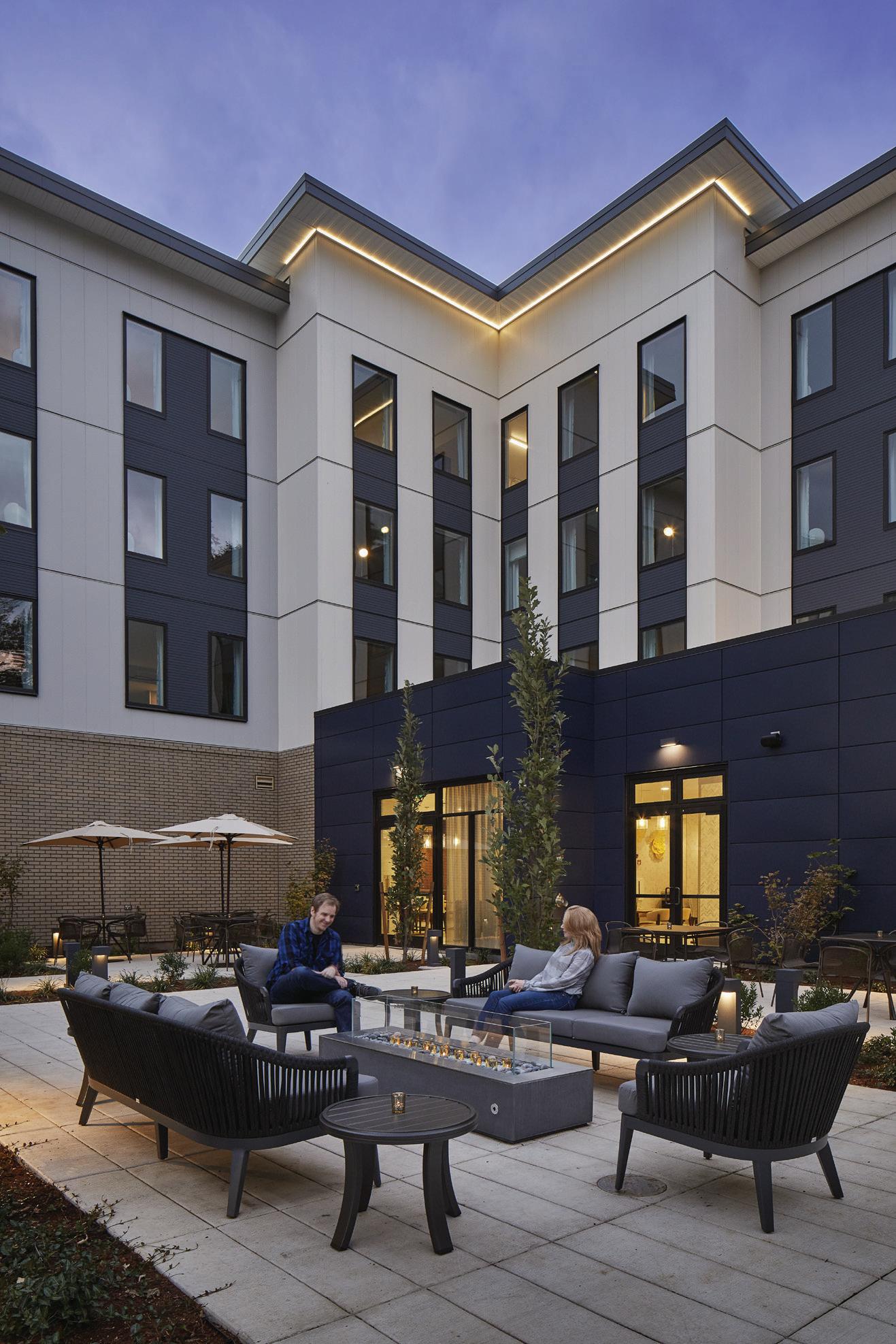
4 minute read
The Top Digital Trend to Watch in 2022
Targeted Personalization Will Help Your Hotel Website Grow Its Direct Booking
Timing
Advertisement
• Date Range • Days of the Week • Time of Day • Timezone
Visitor Profile
• Location (county, state, city) • Source (TripAdvisor, Google, Instagram, Custom Domains, etc.)
Demand
• Search Dates • Search by Days of the Week • Booking Value and Availability • Early Bird, Last Minute • Length of Stay
Visitor Behavior
•Members vs. Non-Members • Previous Interactions • Last Page Visited
Travel Party
• Number of Adults • Number of Children • Number of Rooms
Custom Training
• Device Type • URL Variables • CRM Info Stored In Data-layer
While there are a number of emerging trends in 2022, hoteliers need something that is not only fast and easy to implement but will deliver almost immediate results. In terms of the range of technologies that can help drive revenue, the most promising cost-effective technology to drive maximum conversion and booking growth is targeted personalization.
While personalization is not new, the targeting capabilities of personalization tools continue to evolve, and they require renewed consideration in 2022. Targeted personalization is executed through six over-arching criteria (that can be implemented alone or in combination): Lookers are targeted according to these six criteria and can be contacted with specifically tailored messages.
Personalized Flash Sale
Personalization gets even more personal when combining the targeting criteria and the countdown timer for a hyperpersonalized flash sale. While Flash Sales are nothing new, they are typically driven by a specific date for a specific amount of time or by availability in inventory. However, when combined with targeting criteria they can deliver a more precise proposition. The targeting criteria, when combined with the countdown timer, can start as soon as the looker hits the website. So, this is true 1:1 marketing. Thanks to the timer, the guest knows in advance that they will only have 20 minutes to book the offer, whether it’s a deep discount or significantly included packaged value adds. The booking must clearly indicate it is fully cancellable to help overcome any concern of losing their money with the impulse purchasing decision. If the purchase isn’t made within the allotted time (20 minutes), a message is displayed saying they will be contacted in the future for other flash sales if they share their email address. This type of sale creates urgency and drives focused bookings in a very short period of time. It also helps to grow the hotel’s marketing database.
Personalized Forms
Personalized forms enhance existing generic website forms and add targeting. Currently, forms on hotel websites sit on a single page and cater to requests ranging from “Contact Us”, Meetings, and Weddings. Personalized forms improve the guest experience by displaying as a layer on any page desired by the hotelier providing, they are triggered by the targeting criteria. Personalized forms have numerous applications. If the source site is wedding-related, a simple wedding form can be triggered from any hotel page after a certain amount of time on the hotel website. If a guest is on any page for more than 60 seconds, the “contact us” form can be triggered, asking if they have additional questions about the specific page. The personalized form can be triggered if the guest is searching for a date that is sold out and capture the guest’s name to be included on a waiting list. Personalization of forms is a subtle and friendly way of collecting information from guests and enriches the hotel’s database.

Predictive Personalization
Predictive personalization is the ability to predict the actions of users based on their previous behaviors online. Data related to a user’s online history is used to predict their actions and thereby place content more apt to elicit desired behaviors.
When it comes to hotels, predictive personalization constructs a predictive score of the user based on their past behavior (before coming to the website), current behavior on the website, any interaction it has with on-site personalization messaging, and external market data. Once implemented, predictive personalization addresses two issues hotelier marketers face. Either they are not running valuetargeted campaigns, or they are running promotional campaigns that target everyone.

A hotel can use predictive personalization to run value-targeted campaigns and drive more bookings and revenue. The solution will split promotions and uses targeted offers for low-intent users (and drive 20-30 percent more bookings) and targeted upsells to high-intent users (up to 30 percent more revenue). For hotels that are running promotions that don't differentiate based on intent, this personalization can optimize these campaigns and save the hotel money by splitting the campaigns and reducing incentives for high-intent users. By suppressing promotions to those with high intent, personalization will save the hotel up to 80 percent on unnecessary discounts to these already motivated bookers. When properly implemented, conversion rates for low-intent users can increase between 50-60 percent and high intent user conversions can increase over 150 percent.
So, if a hotel is looking to quickly grow their direct bookings and revenue on their hotel website and booking engine, they should strongly consider how personalization can help them achieve their goals. Strategically targeted personalization will deliver the right message at the right time to the right looker that will seamlessly convert them
into a booker! MICHAEL J. GOLDRICH
ABOUT After two decades of hotel digital marketing experience, Michael J. Goldrich joined The Hotels Network as Chief Experience Officer to become the Voice of the Customer. Michael helps hoteliers grow their direct channel by using The Hotels Network's innovative solutions to attract, engage and convert visitors throughout the online booking journey.
HIlton Garden Inn - Wilsonville, OR










